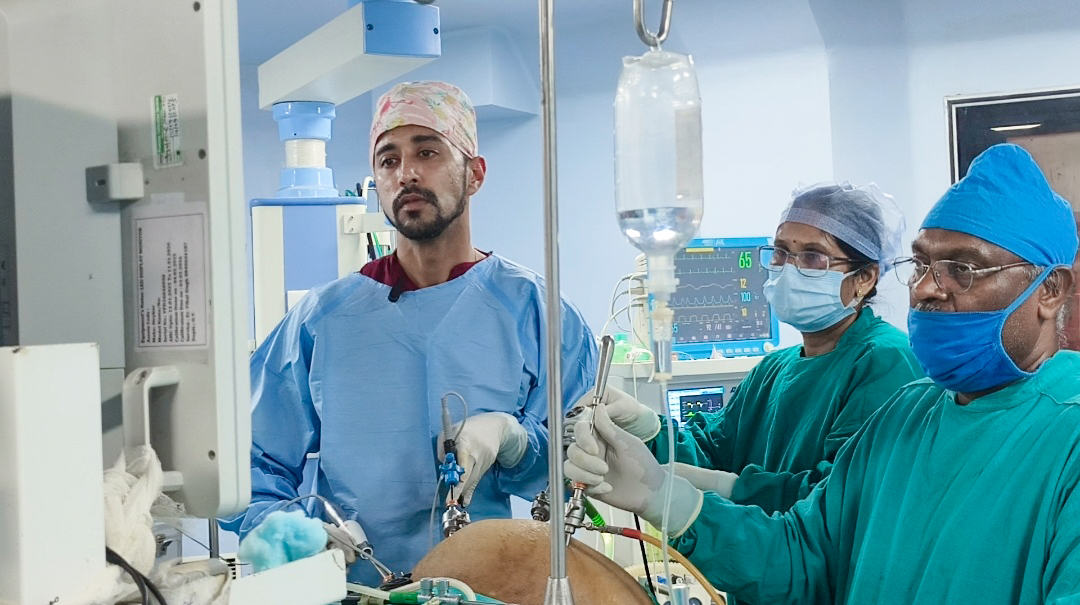Within the muscle layer of the uterus are harmless tumours known as uterine fibroids. It develops Infertility, pelvic pain, and heavy menstruation are all possible outcomes of fibroids; however, many women don't experience any symptoms. If medication and other precautionary approaches do not cure uterine fibroids, then surgery may be recommended.
The multiple types of surgery presently possible will be covered in this complete guide to help you take an essential step and figure out the most beneficial plan of action for your particular conditions and needs.
Understanding Your Options For Surgery to Remove Uterine Fibroids
The size and location of the fibroids, your age, your goal for future fertility, and your general health all influence the decision to have surgery to remove uterine fibroids. The following are a few of the most typical surgical techniques:
- Myomectomy:
- The goal of this operation is to remove the fibroids without damaging the uterus.
- It's a great choice for ladies who want to maintain their fertility.
- Open surgery, laparoscopy (minimally invasive surgery with tiny incisions), or hysteroscopy (using a tiny camera placed through the cervix) are the three methods available for myomectomy.
- Uterine Artery Embolisation (UAE):
- In order to cause the fibroids to shrink, this minimally invasive method involves injecting microscopic particles into the arteries that provide blood to them.
- For some women, UAE may be a good option because it is less intrusive than surgery.
- Hysterectomy:
- This includes the uterus being surgically removed.
- When fibroids are significantly affecting a person's health or after all other choices have been explored, it is typically considered.
- One of the risks and adverse consequences of a hysterectomy, a significant procedure, is menopause.
Making an Informed Decision
Choosing the best procedure to remove uterine fibroids requires a lot of study. Discuss all of your options with your physician, considering the potential benefits and drawbacks of each procedure.
- Consider your reproductive goals: If you want to have children in the future, a myomectomy could be the best option.
- Talk about your way of life: Consider the healing duration associated with each therapy, as well as how it may impact your daily schedule and work commitments.
- Explore minimally invasive options: To lower the risk of complications and quick recovery, discuss minimally invasive techniques like laparoscopy or UAE if needed.
- Enquire about possible dangers and issues: Be aware of the risks associated with each procedure, such as bleeding, infection, and damage to nearby organs.
Preparing for Surgery
After you make your choice, your doctor will give you specific instructions on how to prepare for your uterine fibroid removal operation. This might consist of:
- Stopping some medications: You may need to stop taking some medications, such as blood thinners, in advance of having surgery.
- Adjusting your diet: You may be asked to stick to certain fasting or dietary guidelines before your procedure.
- Arranging for post-operative care: Make plans for someone to help you at home while you heal.
Recovery and Aftercare
The length of recovery depends on the type of surgery.
- Minimally invasive procedures: Compared to open surgery, minimally invasive techniques often include shorter hospital stays and faster recovery times.
- Open surgery: A longer hospital stay and recovery time may be required.
While recovering, it's important to:
- Follow your doctor's instructions carefully: This could involve getting painkillers as prescribed, avoiding physically difficult tasks, and resting.
- Monitor for any signs of infection: Contact your doctor immediately if you experience extreme pain, unusual bleeding, or a fever.
- Attend follow-up appointments: Keep track of your progress and address any problems by scheduling regular follow-up meetings with your doctor.
Dealing with Uterine Fibroids: Beyond Surgery
Even when uterine fibroids are surgically removed, maintaining a healthy lifestyle is needed.
- Maintain a healthy weight: Being overweight may increase the chance of developing fibroids.
- Eat a balanced diet: Pay attention to fruits, vegetables, and complete meals.
- Manage stress: Tension can increase some fibroid symptoms.
- Engage in regular exercise: Exercising on a regular basis can improve the quality of your life.
Conclusion
Surgery to remove uterine fibroids may be a helpful therapy option for women who are experiencing significant discomfort. By carefully considering your options, discussing your concerns with your doctor, and following their instructions, you may make educated decisions about your treatment and manage the healing process.

